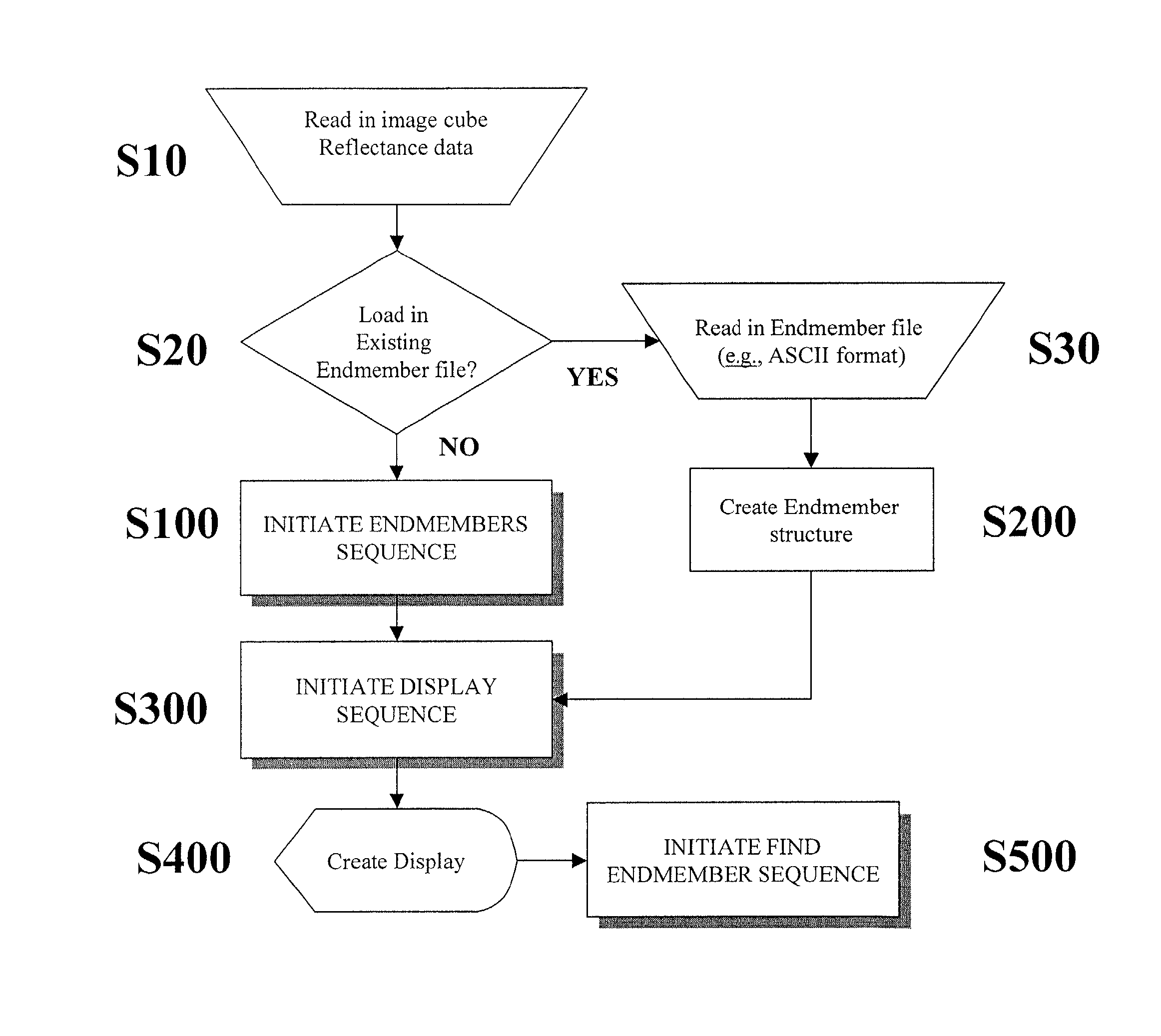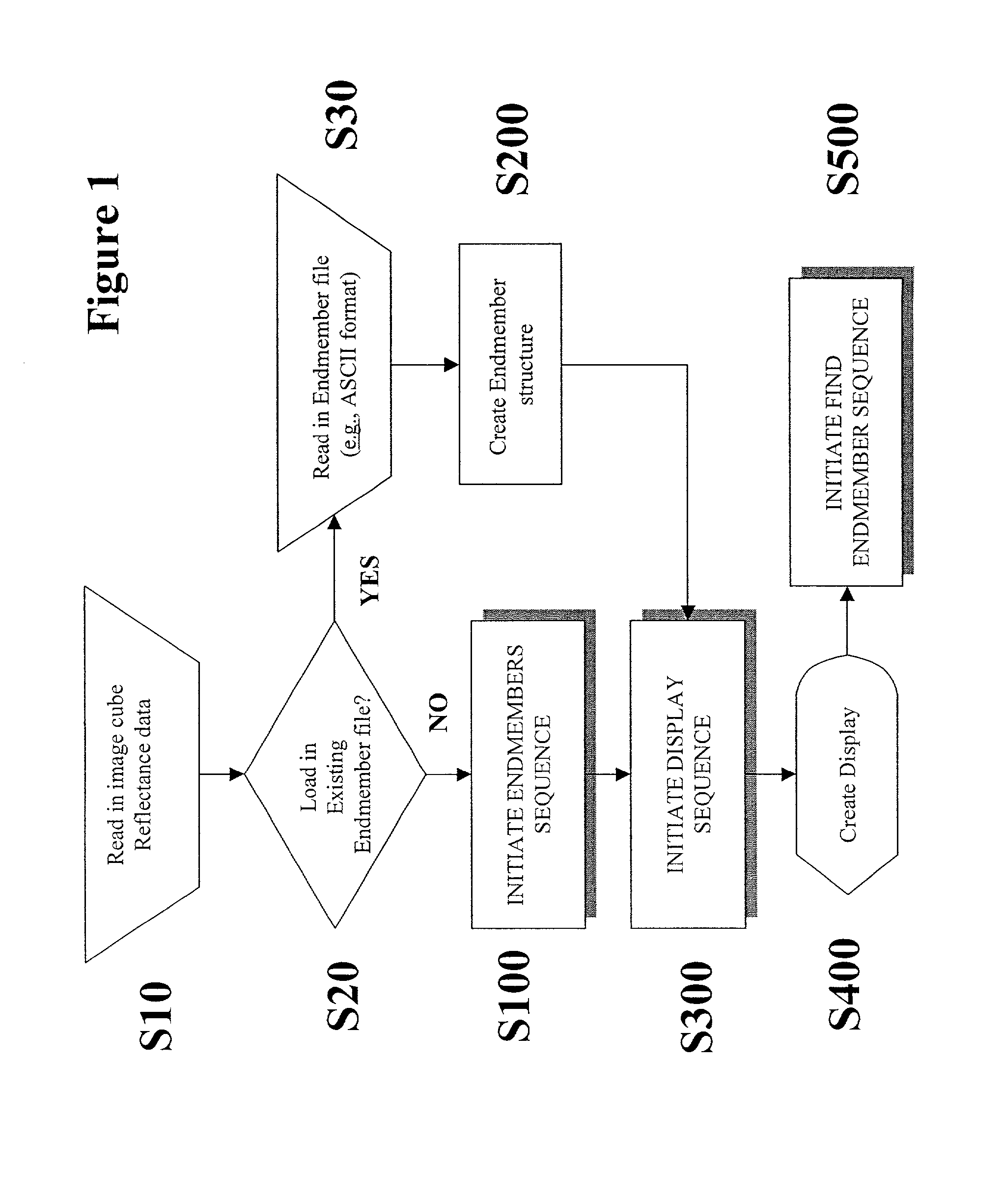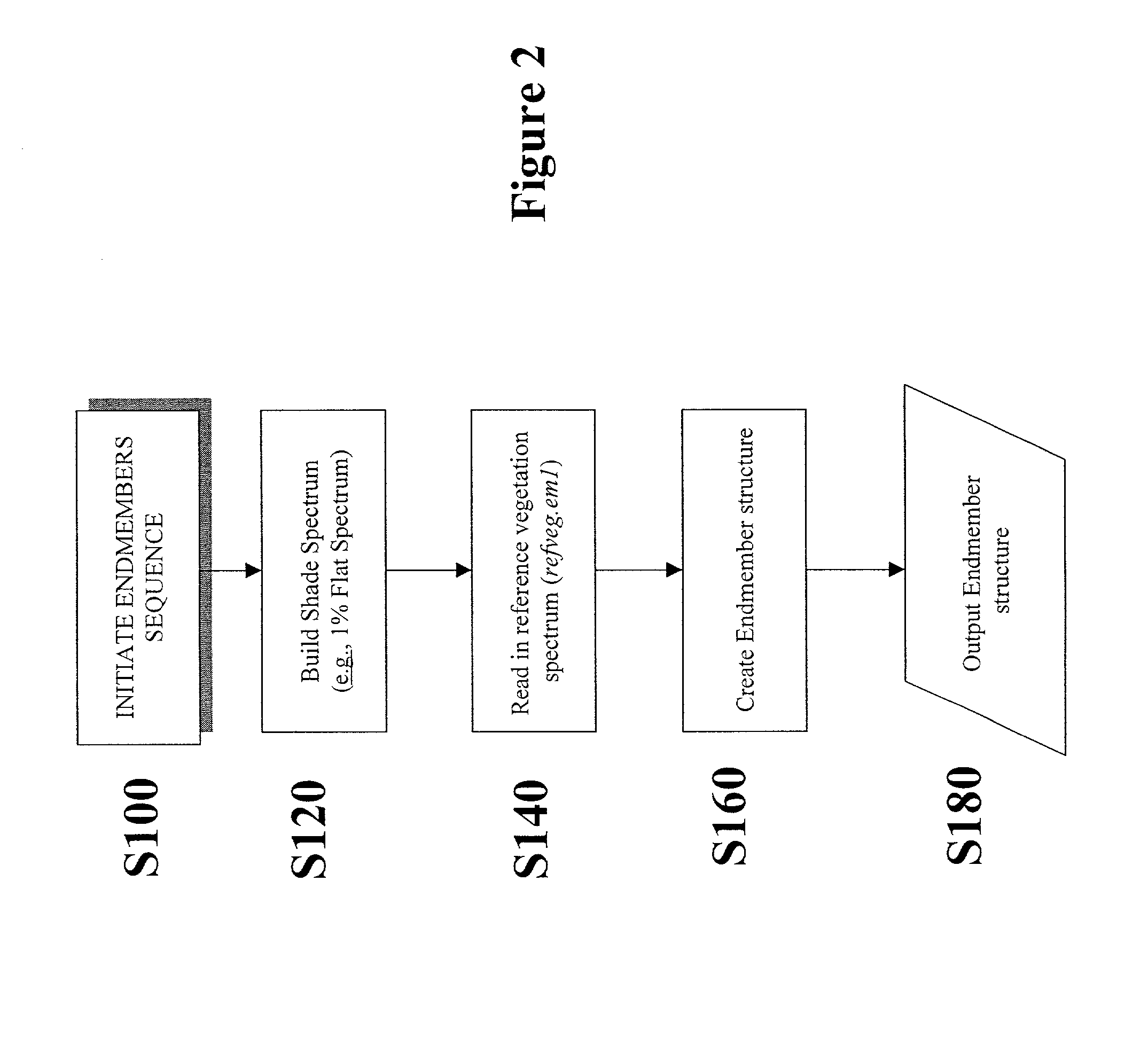Method for selecting representative endmember components from spectral data
a spectral data and endmember technology, applied in image enhancement, scene recognition, instruments, etc., can solve the problems of inability to provide routine and reliable results, inability to compare the endmembers determined through these processes to those derived by experts, and limited utility, so as to improve the complexity of data sets, improve the accuracy, and improve the cost
- Summary
- Abstract
- Description
- Claims
- Application Information
AI Technical Summary
Benefits of technology
Problems solved by technology
Method used
Image
Examples
Embodiment Construction
[0024] The following embodiments, though representing the best known mode of practicing the present invention, are not intended to be limited thereto. Based on the knowledge of one skilled in the art, variations of the following embodiments are intended to be part of the scope of the present invention.
[0025] The flowchart of FIGS. 1-6 sets forth the general process steps for determining the land cover types, e.g, green vegetation (leaves, grass, etc.), non-photosynthetic vegetation ("NPV") (e.g., bark, wood, dry leaves), soils, snow, ice, roads, buildings, and shade, within a particular scene according to an embodiment of the present invention. Image cube reflectance, emission, or radiance data (hereafter "reflectance data") indicative of a scene is read into a processor S10. The scene boundaries are defined by, for example, a set of ground-based longitudinal and latitudinal coordinates. The reflectance data results from imaging performed by any of a number of sources, such as, sate...
PUM
| Property | Measurement | Unit |
|---|---|---|
| reflectance | aaaaa | aaaaa |
| wavelength | aaaaa | aaaaa |
| spectra | aaaaa | aaaaa |
Abstract
Description
Claims
Application Information
 Login to View More
Login to View More - R&D
- Intellectual Property
- Life Sciences
- Materials
- Tech Scout
- Unparalleled Data Quality
- Higher Quality Content
- 60% Fewer Hallucinations
Browse by: Latest US Patents, China's latest patents, Technical Efficacy Thesaurus, Application Domain, Technology Topic, Popular Technical Reports.
© 2025 PatSnap. All rights reserved.Legal|Privacy policy|Modern Slavery Act Transparency Statement|Sitemap|About US| Contact US: help@patsnap.com



